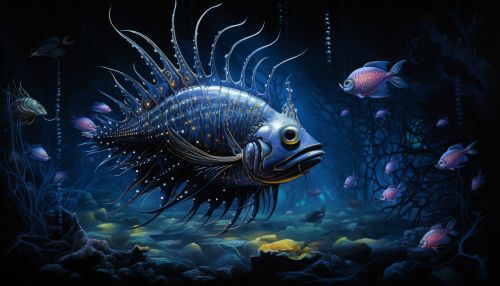High-Pressure Biology of Deep-Sea Organisms
Introduction
High-pressure biology is a specialized field of study that examines the effects of high pressure on biological systems. This field is particularly relevant to the study of deep-sea organisms, as they live in environments with pressures that can exceed 1000 atmospheres.


High-Pressure Environments
Deep-sea environments are characterized by high pressures, low temperatures, and a lack of light. The pressure increases by approximately one atmosphere for every 10 meters of water depth, meaning that organisms living at depths of 1000 meters or more are subjected to pressures over 100 times greater than those at sea level. These extreme conditions have led to the evolution of unique adaptations among deep-sea organisms, enabling them to survive and thrive in high-pressure environments.
Adaptations to High-Pressure Environments
Cellular and Molecular Adaptations
Deep-sea organisms have developed a range of cellular and molecular adaptations to cope with high-pressure environments. These include changes in membrane composition and structure, alterations in protein structure and function, and modifications to metabolic pathways. For example, the cell membranes of deep-sea organisms often contain a higher proportion of unsaturated fatty acids, which help to maintain membrane fluidity under high pressure.
Physiological Adaptations
Physiological adaptations to high pressure also play a crucial role in the survival of deep-sea organisms. These adaptations can include changes in respiration, circulation, and sensory systems. For instance, many deep-sea organisms have developed the ability to synthesize high concentrations of trimethylamine oxide (TMAO), a compound that helps to stabilize proteins under high pressure.
Effects of High Pressure on Deep-Sea Organisms
High pressure can have profound effects on the biology of deep-sea organisms. These effects can include changes in behavior, physiology, and even morphology. For example, high pressure can affect the buoyancy of organisms, influencing their ability to move and feed. It can also impact the function of sensory systems, affecting how organisms perceive their environment.
Research Methods in High-Pressure Biology
Studying the biology of deep-sea organisms under high pressure presents unique challenges. Researchers must use specialized equipment, such as pressure vessels and submersibles, to collect samples and conduct experiments at high pressure. Techniques such as high-pressure microscopy and spectroscopy are also used to study the effects of high pressure on cellular and molecular processes.
Future Directions in High-Pressure Biology
The field of high-pressure biology continues to evolve, with new technologies and methodologies enabling researchers to explore the biology of deep-sea organisms in ever greater detail. Future research directions may include the development of new high-pressure experimental systems, the application of genomics and proteomics techniques to study high-pressure adaptations, and the exploration of the potential applications of high-pressure biology in biotechnology and medicine.
